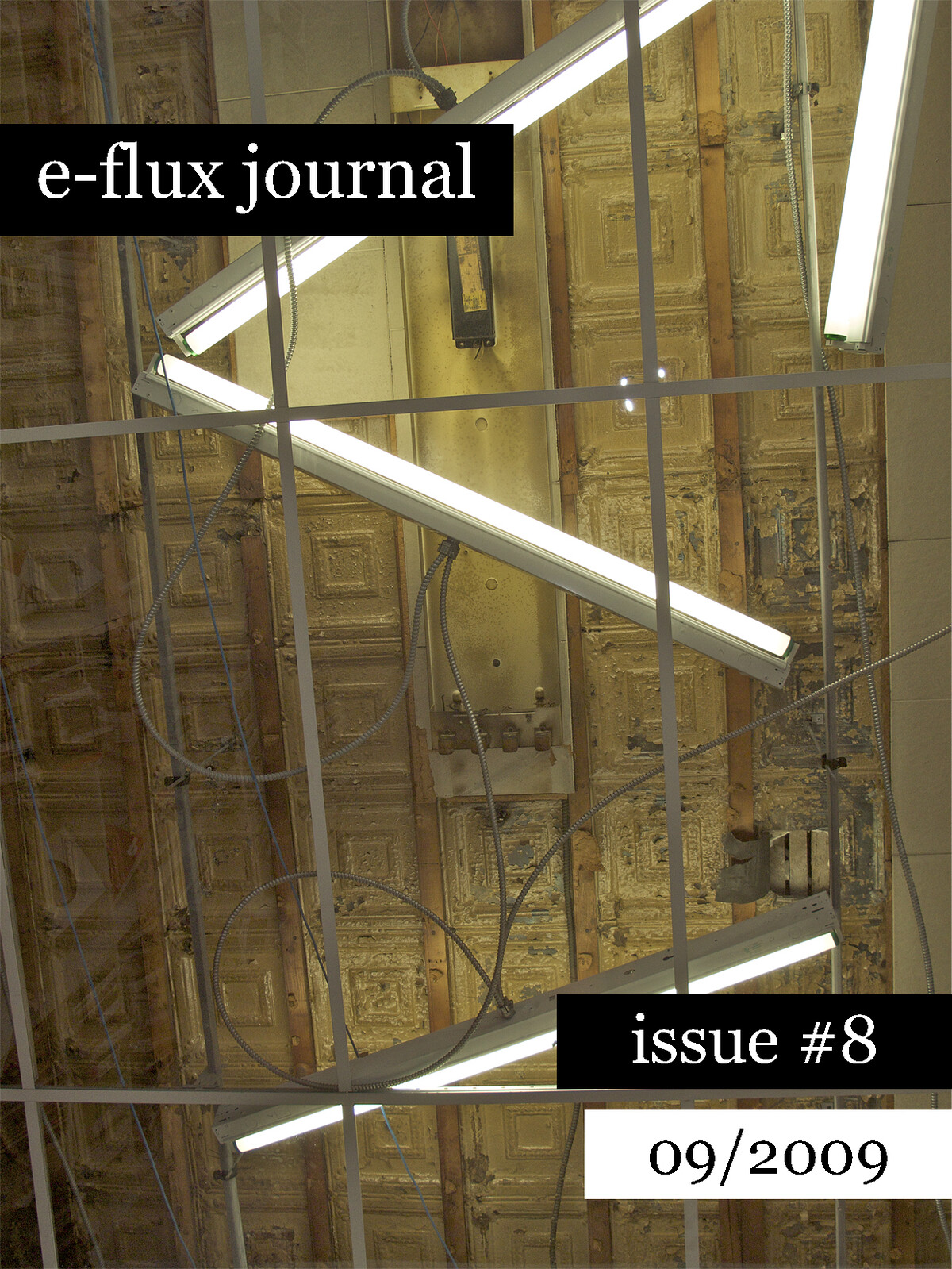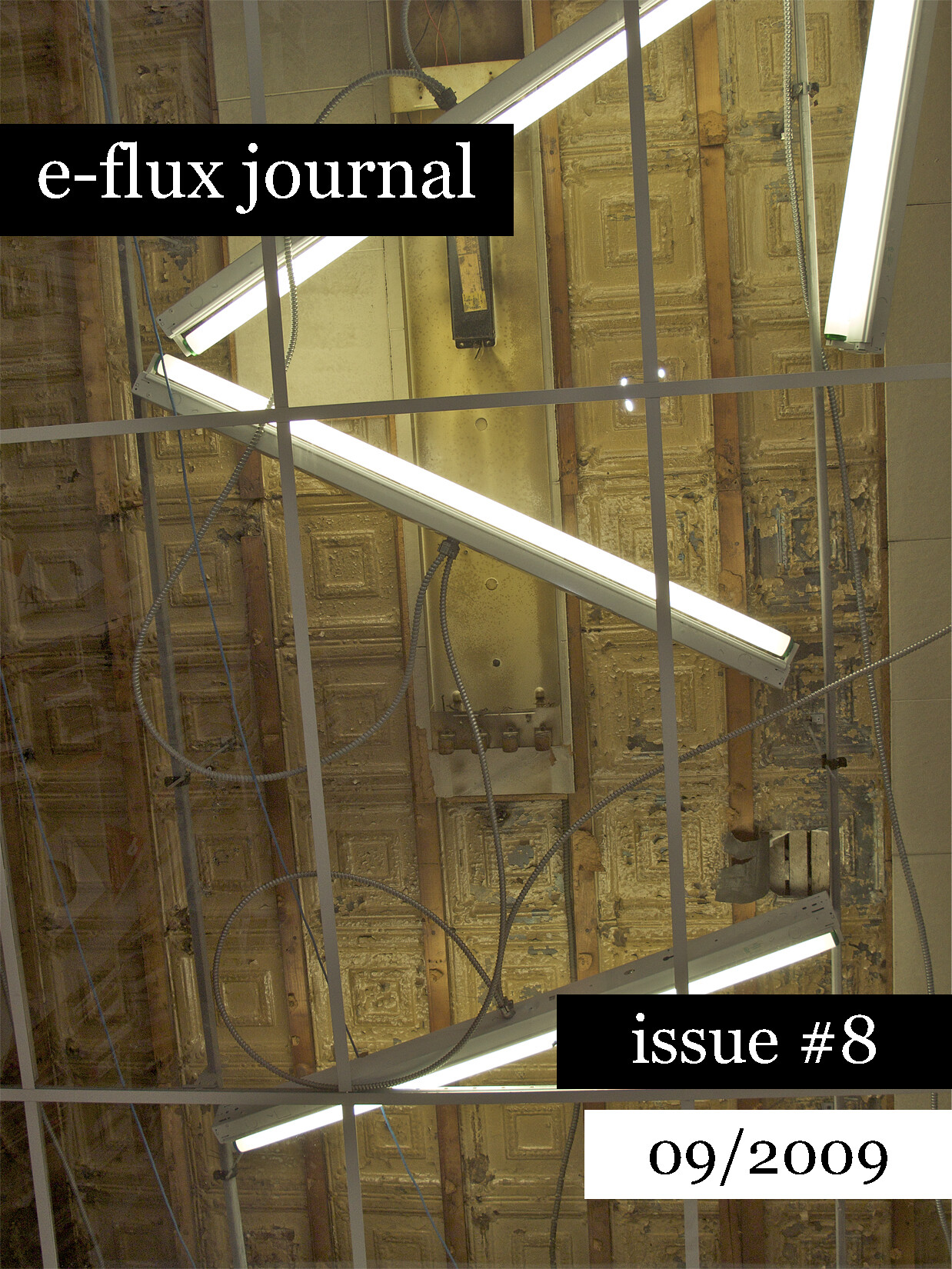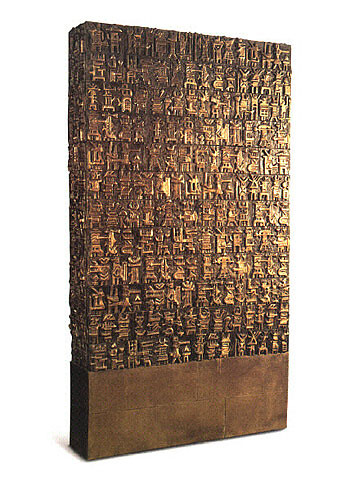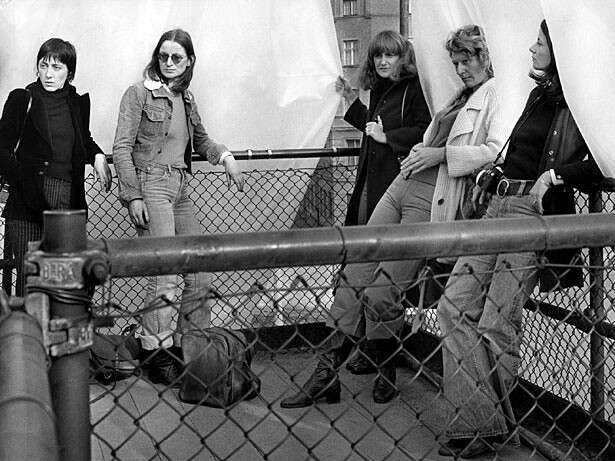Many recent works of art hold undoubtedly close ties to anthropology, resembling reverse ethnography or neo-ethnography, taking the form of research that embraces anthropology’s sociological methods, adopting documentary techniques or borrowing from such genres as the travelogue. Anthropology, on the other hand, is currently engaged in renewed debates over the discipline’s roots as reflected in its contemporary “politics.” These controversies, involving politics, ethics (both disciplinary…
Issue #08
September 2009
With:
Julieta Aranda, Brian Kuan Wood, Anton Vidokle, Anselm Franke, Barbad Golshiri, Bilal Khbeiz, Sven Lütticken, and Marion von Osten
This issue marks the beginning of e-flux journal ’s second year. The open-ended editorial model seems to be working—contributors have frequently chosen to borrow, extend, or elaborate upon concerns opened up by previous texts. So far, discussions on self-design have spoken to an interest in self-building practices, the factory as a museum became the museum as a factory, while a speculative model for granting legitimacy to artistic acts in the absence of exhibition infrastructures…
View List
View Grid
6 Essays
September 2009
Positions June 2009
Making art, as I’ve always put it, is a habit—a poor one in my case. Making art is not initially creation but constant repetition, salvaged by making puny differences in certain orders on the plane of the feasible. Art is, semiotically speaking, purely negative; it cannot be defined positively. And of course doing it entails not doing something else . Like some of my Iranian colleagues, I’m not doing it these days. We have all seen frames that we can freeze, stick…
The Products of Fragility
Modernity, the mother of many democracies, has given a great deal of attention to developing means of preservation and conservation. It has taught us to care for all that is frail and delicate. Charles Baudelaire, speaking about one of his contemporaries, the photographer Miron, said: “He photographed Paris because it is ephemeral.” 1 Perhaps then it should come as no surprise that such an image, itself made up of only smooth paper and some ink, outlasts the…
Irene ist Viele! 1
An extensive 2004 study undertaken by the Swiss Federal Office of Statistics (BFS) found that, in one of the world’s wealthiest countries, of nearly fifteen billion annual work hours, eight billion went unpaid. Two-thirds of that free labor was performed by women, while women in the wage-labor sector were paid on average 18 percent less than men. 2 The study shows that the “invisible hand of the market,” with its celebrated promise of economic equality, fails…






